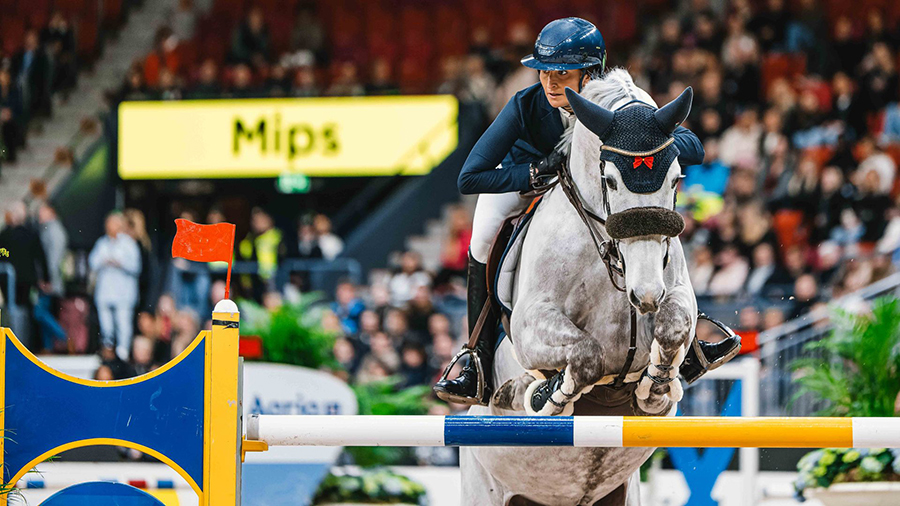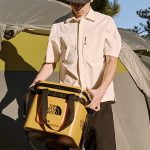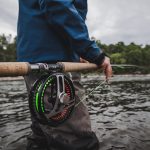Swedish helmet technology provider Mips saw sales declines moderate a bit in the third quarter from the 51 percent decline experienced in the second quarter, but the company acknowledged it was another soft quarter with the impact of inventory adjustments still being felt in the bike sub-category. The company reports in Swedish Krona (SEK).
The third quarter posted a 32 percent decline in net sales to SEK 77 million, compared to SEK 113 million in the corresponding quarter last year. The decrease in net sales was said to be mainly due to continued soft demand in the bike sub-category.
The company said that after a slow start, sales gradually improved during the quarter, reporting that bike retailers in the key U.S. and European markets continued to reduce their inventory during the end of the summer and inventory of bike helmets have now returned to normal levels in the majority of bike stores. Inventory levels at some customers in the bike sub-category, the helmet brands, are reportedly still higher than normal but improved during the quarter.
Helmet Category Sport
The Sport category saw sales decline 29 percent in the third quarter. The decrease in net sales was said to be mainly due to slow development in the bike sub-category.
“Even if demand from end customers has been lower than during the pandemic-boosted years, sales of bike helmets to consumers are still higher than before the pandemic in most of the major markets,” said company President and CEO Max Strandwitz in the Q3 report. “At Mips, we have also substantially increased our customer penetration in recent years with more helmet models equipped with Mips solutions, and we have won new customers.
“When we analyze data from our major bike channels, we see that despite the impact of inventory corrections, we successfully continued to take market share and increase market penetration of helmet models with Mips’ safety system,” Strandwitz continued. “We, therefore, remain confident about our long-term growth opportunities in the bike sub-category once the market starts to normalize.”
Strandwitz said that inventory normalization in the bike sub-category has taken longer than what the sector and the company had predicted.
“Customers and retailers are more cautious in building inventories as they now have a higher cost of capital,” he explained. “As always at this time of the year, the orders we are receiving and producing now for the bike sub-category are for helmets that will be sold during the coming spring season, so they are not a direct effect of our customers’ sales to end customers.”
Strandwitz did say that their customers see a recovery ahead for 2024.
Within the snow sub-category, the CEO said they continued to deliver many Mips solutions after a strong 22/23 winter season, especially in the North American market.
“Our view is that the winter season will be strong again this year as we see an increase in the level of our customers’ pre-season orders compared to last year,” Strandwitz suggested.
Helmet Category Motorcycle
Despite new customers and new helmet models launched on the market, the Motorcycle category continued to be weak with a decrease in net sales of 68 percent in the third quarter.
“While we still see a great interest in Mips, we are seeing that it is taking our customers longer than both we and they had expected to get helmet models equipped with Mips solutions out in the market,” Strandwitz explained. “There are several reasons for this but the main one is that a somewhat weaker consumer demand has led the helmet brands to focus on selling the older models they have in stock, which are not equipped with the Mips safety system.
“Our assessment is that the Motorcycle category will remain soft in the near term,” he continued. “We have already initiated initiatives to increase sell-through sales and awareness of Mips, both in stores and online. We have also launched Mips technology in new helmet models with our customers that will generate volume going forward and support our long-term growth ambition.”
Strandwitz said the company remains positive about the Motorcycle category, but at the same time, it needs to increase the number of activities, mainly in the on-road motorcycle helmets sub-category, to ensure it achieves its long-term plan for the Motorcycle category.
Helmet Category Safety
The Safety category reportedly continued to “develop well” with strong growth in sales both during the quarter and for the year, compared with the prior year.
“In October we participated in the sector’s two major annual trade fairs, NSC in New Orleans, U.S. and A+A in Düsseldorf, Germany,” Strandwitz shared. “In conjunction with these fairs, we announced new helmet launches with existing customers as well as two new collaborations. One of these is with the strong global brand MSA and the second is with the brand LIFT Safety, which has a strong position in the U.S. safety market in the premium segment. With these two customers, we have further strengthened our position on the North American market and have now established a solid customer base that supports our long-term plan for the Safety category. I am pleased with our development in this category and with the new customers and models we have launched, and I look forward to delivering on our ambitious, long-term plan.”
Mips operating profit decreased by 60 percent to SEK 15 million in the third quarter, compared to SEK 37 million in the prior-year quarter. The operating margin was 19 percent of sales in Q3 versus 33 percent in Q3 last year.
The decrease in operating margin was said to be largely explained by the lower sales, ongoing investments within strategic initiatives in marketing, research and development, as well as the negative impact of currencies.
Diluted earnings per share was SEK 0.52 in the third quarter, compared to SEK 1.10 in Q3 last year
For the January to September Year-to-Date Period:
- Net sales decreased by 42 percent to SEK 266 million, with organic growth down 44 percent;
- Operating profit decreased by 74 percent to SEK 53 million versus SEK 205 in the prior-year YTD period;
- Operating margin was 20.0 percent of sales in the YTD period, down from 45.1 percent in the 2022 YTD period;
- Negative cash flow from operating activities amounted to SEK 21 million, versus positive cash flow of SEK 189 million in the 2022 YTD period; and
- Earnings per share, diluted, amounted to SEK 1.82 in the nine-month period, compared to SEK 5.91 in the corresponding YTD period in 2022.
“During the last 12 months, the bike sector has faced tough challenges, but several sector analyses indicate an expectation that the market will normalize in 2024,” Strandwitz said in wrapping up his Q3 report outline. “This is after the sector has been impacted by a decline in consumer sales for the last one and a half years after the strong years of the pandemic in 2020 and 2021. Above all though, the sector was impacted by the retailers’ extreme inventory adjustments after the over-optimistic predictions ahead of the 2022 season.”
He said that due to the general market unease about the effects of higher inflation and higher interest costs, both in terms of consumer purchasing habits and the retailers’ financial ability and desire to return to the inventory levels they had historically, the recovery will probably take place gradually and at a varied speed depending on the geography and brand.
“Overall though, we look forward to a more stable base for our journey towards our long-term goals,” Strandwitz concluded.
Photo courtesy Mips
















